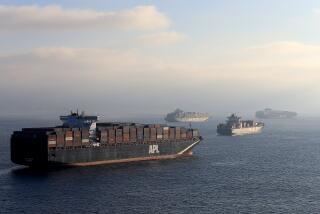U.S. soot warmed Arctic a century ago, study finds
- Share via
Soot from coal-burning factories in northeastern United States may have been the most important factor in the warming of the Arctic region during the first half of the 20th century, U.S. researchers reported Friday.
At its peak, soot produced about double the warming effect that modern-day carbon dioxide levels produce -- 3.2 watts per square meter, compared with about 1.6 watts -- the team reported in the online journal Science Express.
Generally, particulate matter in the atmosphere is thought to have a cooling effect, because it reflects sunlight back into space. But soot in the atmosphere absorbs sunlight and has a warming effect.
When soot, also known as black carbon, is deposited on ice and snow, it has an even stronger effect, because it blocks the natural reflectance of the snow.
Soot in the air and on the ground had not been measured until recently, and it has been “a big unknown in climate studies,” said lead author Joseph McConnell, a snow hydrologist at the Desert Research Institute in Reno.
McConnell and colleagues drilled out an ice column in Greenland, melted it sequentially and analyzed the liquid for carbon, vanillic acid (an indicator of pine forest fires) and a type of sulfur that is an indicator of human activities.
Before 1850, levels of black carbon and vanillic acid were closely matched, indicating forest fires were responsible for most soot.
From 1850 to 1951, black carbon levels were sharply higher, peaking in 1908. The levels matched higher sulfur levels, particularly in winter. The warming effect from the industrial pollutants was eight times that of forest fires, the study found.
Modeling of air currents indicated that much of the carbon came from the industrial Northeast.
Since 1951, black carbon in the Arctic has been decreasing and is less strongly matched to human activities, the researchers found.
In an editorial in the journal, climate scientist Richard Alley of Pennsylvania State University said this showed that humans could alter the climate and clean things up.






